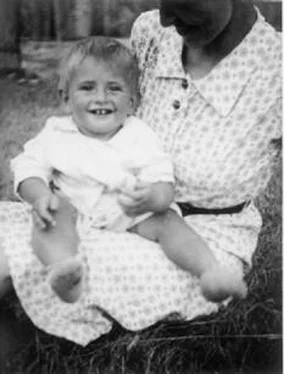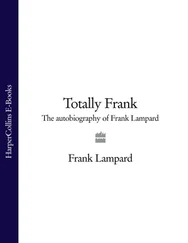An unpretentious Lutheran church—a chapel, really—that looks like a set for an Ingmar Bergman drama and can seat only about fifty parishioners, guards the site of the cemetery. Bobby had felt the peaceful atmosphere of the surroundings when he’d visited Sverrisson’s wife’s parents, who live in Selfoss, and Bobby and his friend Gardar took long walks among the ancient rocks and paths in the area. In a memorial article in the Iceland Review , writer Sara Blask summed up Bobby’s feelings about what he wanted after his death: “Fischer just wanted to be buried like a normal human being—not a chessplayer, just as a person. ”
It took a long time for Bobby to admit to himself that he was dying, but when he came to accept it, he made it clear to Sverrisson that he wanted no fanfare, no media circus, no lavish funeral, and he wanted it to be private . Desiring control until the end, he was particularly emphatic that none of his “enemies” attend his funeral: those who he felt exploited him or with whom he’d established feuds. Above all, he stressed that there were to be no reporters, television cameras, or gaping tourists.
Sverrisson arranged the funeral and carried it out with strict observance of Bobby’s last directives. He knew that the other members of the RJF Committee, who’d worked so tirelessly for Bobby, would be deeply hurt if they couldn’t pay their last respects by attending a ceremonial funeral, but he was nothing if not a loyal friend to Bobby, and he’d spent years protecting him and carrying out his wishes. This last service performed for his friend would cause Sverrisson years of enmity from certain members of the RJF Committee and others who felt close to Bobby during his Icelandic years. Russell Targ, Bobby’s brother-in-law, was particularly irritated since he’d flown from California to attend the funeral, only to find that he’d missed it by hours. The U.S. Chess Federation sent a communiqué to the Icelandic Chess Federation asking about the disposition of Bobby’s body, presumably wanting to bring him back to the United States, a move that Bobby would have detested. Especially at his death, Sverrisson believed it was his duty to fully comply with Bobby’s requests. His friend would be buried where, when, and how he wanted.
It took several days to arrange the details: The grave had to be dug—not an easy task in the frozen volcanic earth of Iceland’s winter; a priest had to be secured; documents had to be approved before the morgue released the body; yet everything had to wait for Miyoko to arrive from Japan. Four days after his death, at eight p.m. a hearse carrying Bobby’s body took the hour’s drive to Selfoss and then to the graveyard. The funeral procession was without pomp and circumstance, exactly as Bobby had wished, and as the hearse drove into Laugadaelir, the long and biting winds of winter awaited the remains of the world’s greatest chess player. It had snowed all morning, and now it was dark and raining. Sverrisson, his wife and two children, and Miyoko had traveled to Selfoss the night before to ensure that the arrangements were in order.
Father Jacob Rolland, a diminutive Catholic priest, originally from France, who also had the distinction of overseeing the burial of Haldor Laxness (Iceland’s only Nobel Prize winner—for literature—and a convert to Catholicism), said a few words of blessing, reportedly likening Bobby’s burial to that of Mozart’s, before the coffin was lowered into the grave. “Like him, he was buried with few present, and he had an intelligence like him that could see what others could not begin to understand.” There was no dirge, no incense, no requiem. Even the wide expanse of stars normally visible in the unpolluted sky was hidden behind rain clouds on that gloomy night. The ceremony took just twelve minutes, and then the freezing mourners departed. A white wooden cross was hastily erected on the grave mound with a placard that read:
Robert James Fischer
F. 9 mars 1943
D. 17 januar 2008
Hvil i friŏi
“Rest in Peace” it said in Old Norse Icelandic.
Within a few weeks daily buses began to arrive from Reykjavik—sometimes two or three a day—filled with the gaping tourists that Bobby had so desperately wanted to avoid. The grave, now with a two-foot-high plain marble stone, had become one of Iceland’s sightseeing attractions.

At the time of his death, Bobby Fischer’s estate was worth more than $2 million, primarily the prize money left over from the $3.5 million that he’d won in his 1992 match with Spassky. Yet Fischer, the man who’d tried so hard to control things on and off the chessboard, never wrote a will. Perhaps he thought he could control his illness and didn’t believe that he was dying until he was too ill to think about legal documents. Or perhaps, in some odd way, it amused him to realize that his money would become a major cause of contention, that it would initiate a baroque chess match in which each of the estate’s possible recipients took a turn at the board to gain a stronger position.
There were four people claiming to be Bobby’s true heir: Miyoko Watai, who lived with Bobby and contended that she was his wife; Nicholas and Alexander Targ, Bobby’s nephews (the two sons of Bobby’s late sister, Joan); and Jinky Young, who claimed to be Bobby’s daughter. All filed papers in Iceland, and were waiting for the court to sort out their respective petitions. The U.S. government also entered the fray in the hopes of gaining twenty years of back taxes owed by Bobby.
According to Icelandic law, a wife receives 100 percent of her husband’s estate if there are no children and only one-third if there is one child or more. However, the Icelandic court questioned the Japanese marriage certificate that Miyoko presented because it was only a photocopy, and she had difficulty proving that she was in fact Bobby’s legal wife.
The claim of the Targ brothers was clear: They are indeed his nephews. Now grown men—one a doctor and the other an attorney—both live in California. They were fully aware that they could only inherit their uncle’s fortune if “closer” relatives—such as a wife or child—are proven not to be rightful heirs. It behooved them, therefore, to try to determine the legitimacy of the other claims.
Finally, there was Jinky. Eight years old at the time of Bobby’s death, the girl was supported financially by Bobby all of her life. Icelandic friends said that Fischer was kind to the little girl, played with her, and bought her presents while she was in Iceland. Surprisingly, though, during the three years that Bobby lived in Iceland, Jinky and Marilyn visited him in Reykjavik only once, remaining there for about a month, in a separate apartment.
Then, a year and a half after Bobby’s death, Marilyn and Jinky traveled to Iceland again, this time to file a claim to his estate. With Eugene Torre’s assistance, an Icelandic lawyer—Thordur Bogason—was hired to represent the child, and soon after the attorney petitioned the court for a DNA test in an attempt to prove Bobby’s paternity. Getting a sample of Jinky’s DNA was simple: Doctors just took a small vial of blood. Retrieving a sample from Bobby, however, was decidedly more problematic. The National Hospital of Iceland, where Bobby died of renal failure, hadn’t saved any of his blood. His belongings were still in his apartment in Reykjavik, but who could prove whether a hair taken from a hairbrush really came from Bobby? The only foolproof way to secure Bobby’s DNA was to take a sample from Bobby’s body. That would settle the matter, everyone believed. In the United States the FBI, which often has to extract DNA in criminal cases, considers the DNA test, when done with the latest technology, infallible.
Читать дальше



![Антон Текшин - EndGame [СИ]](/books/394477/anton-tekshin-endgame-si-thumb.webp)









